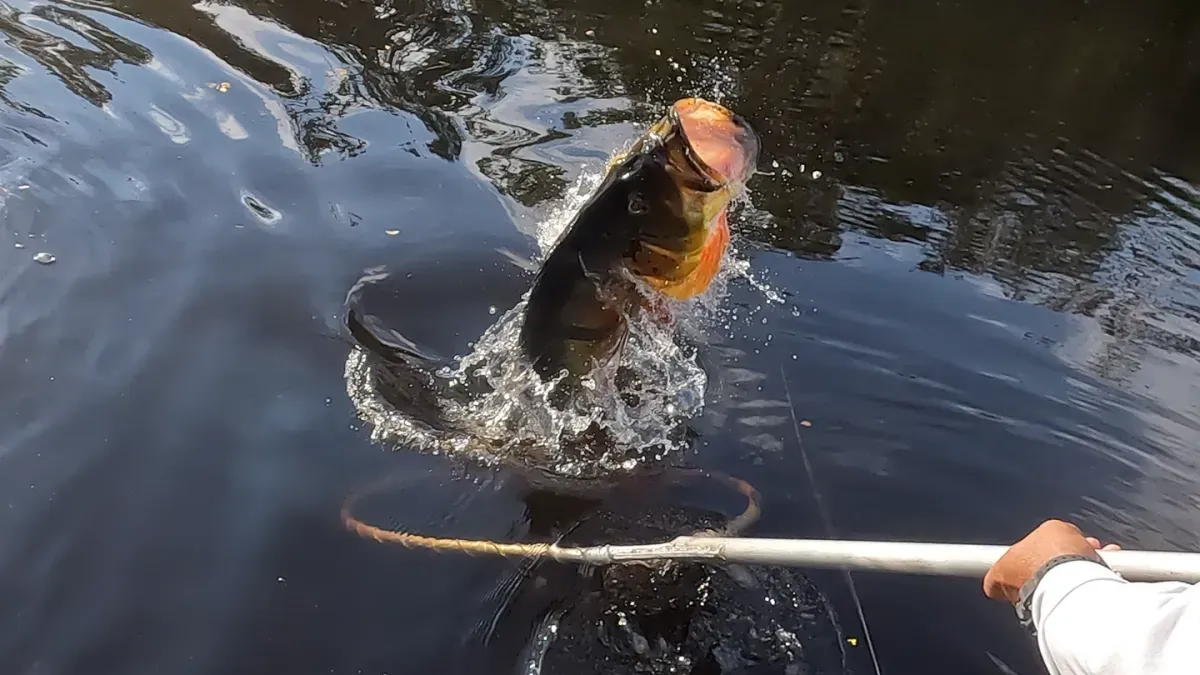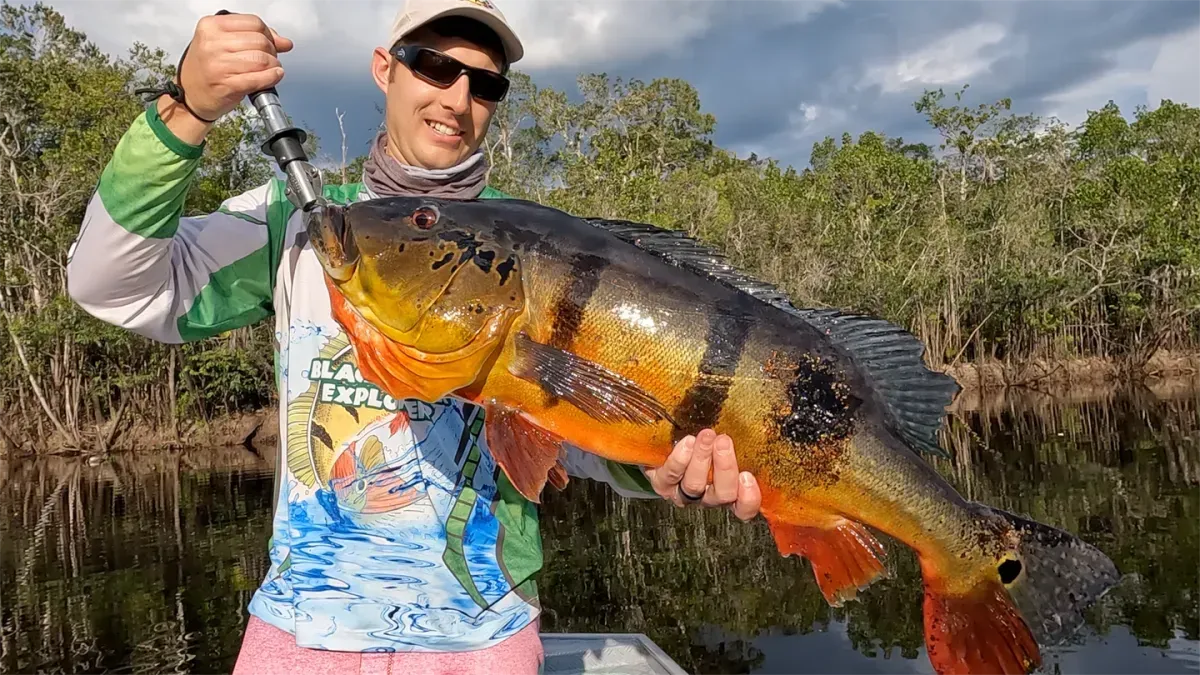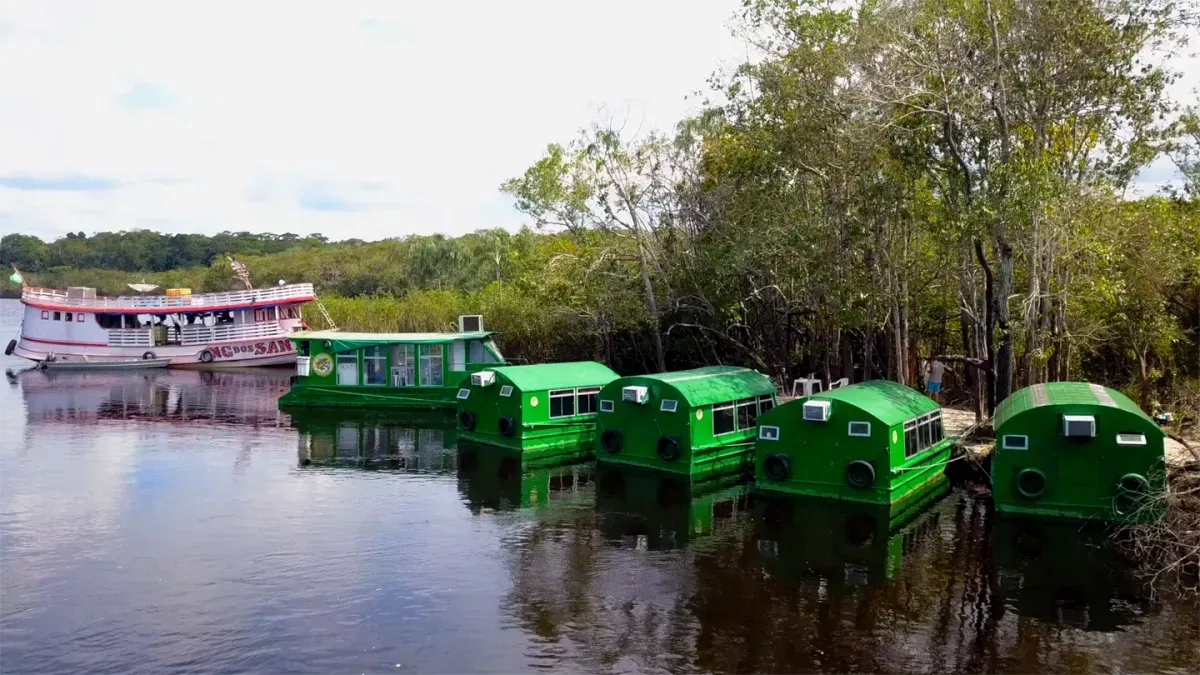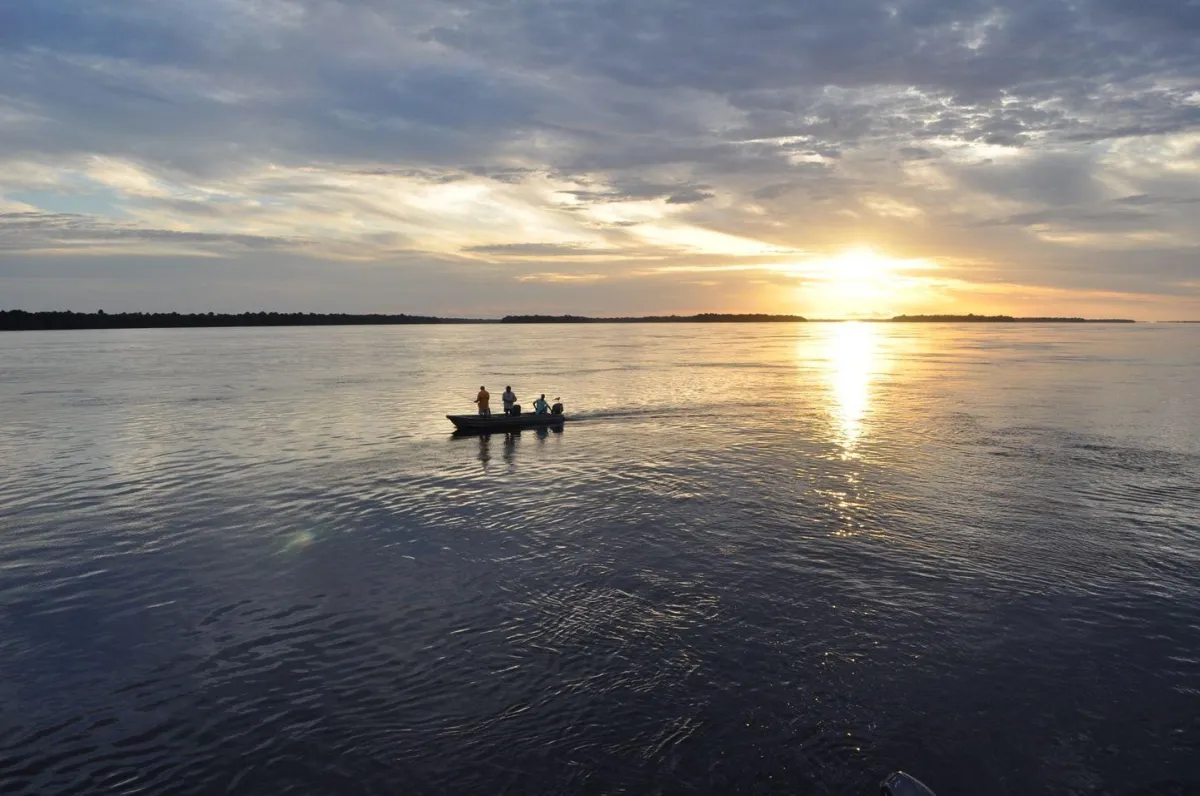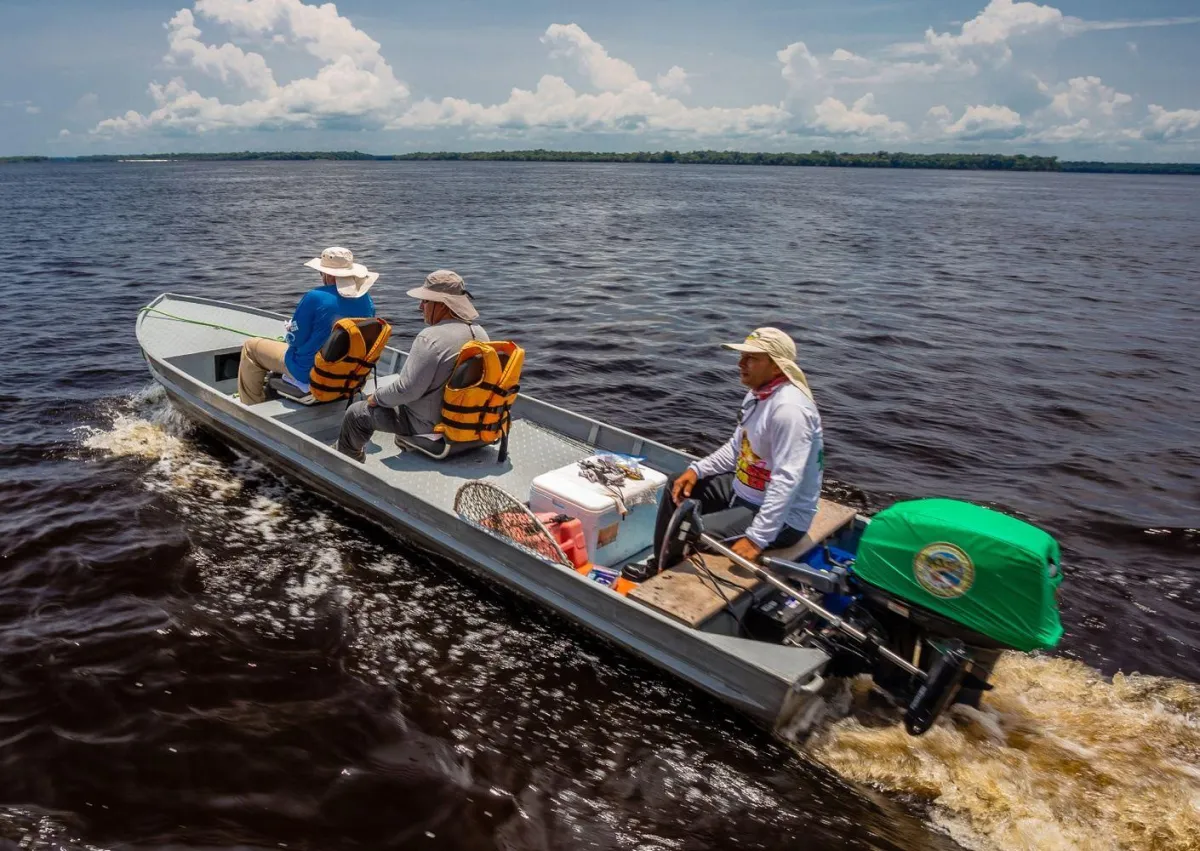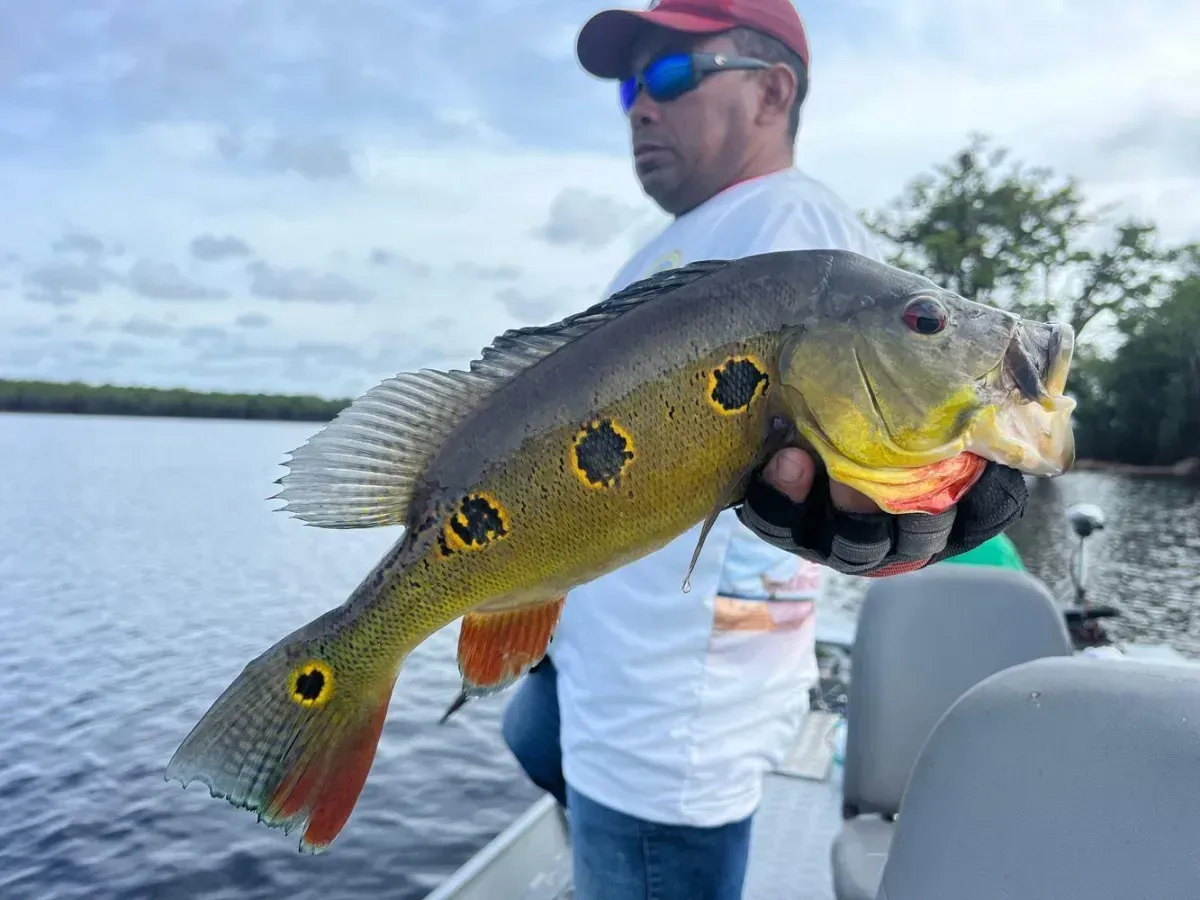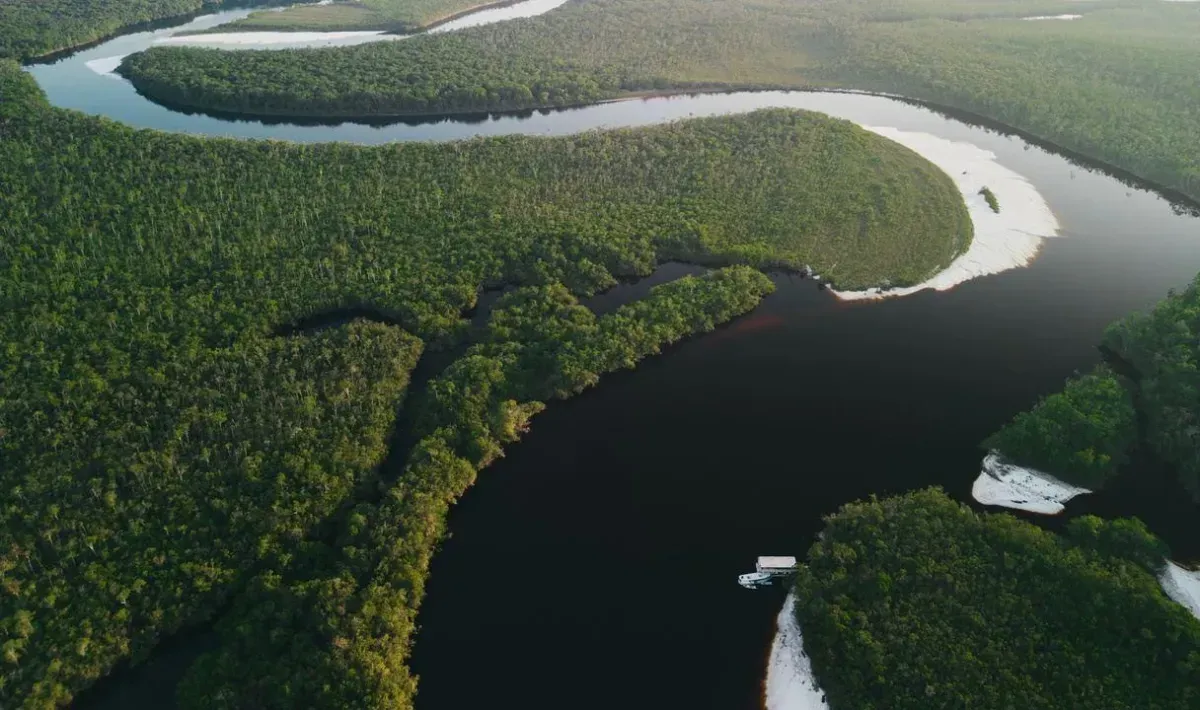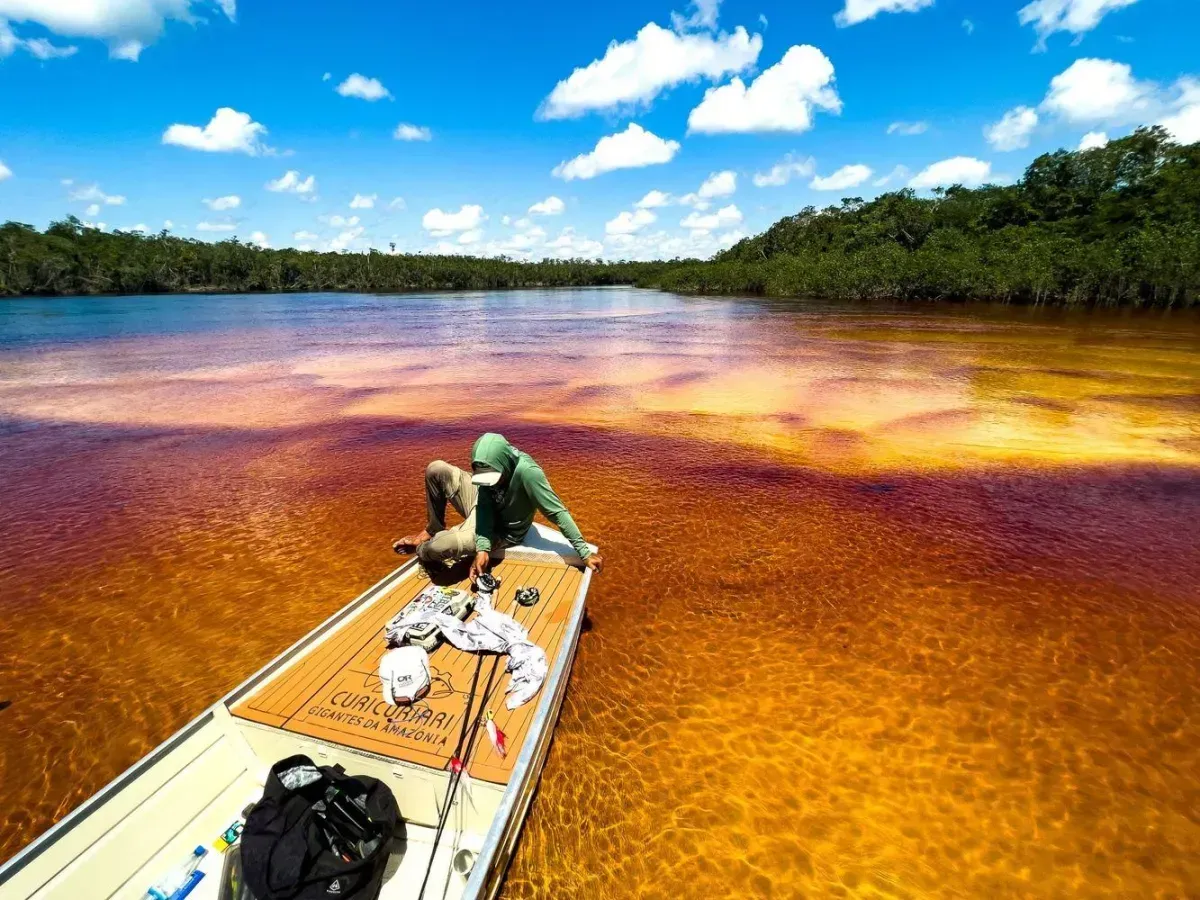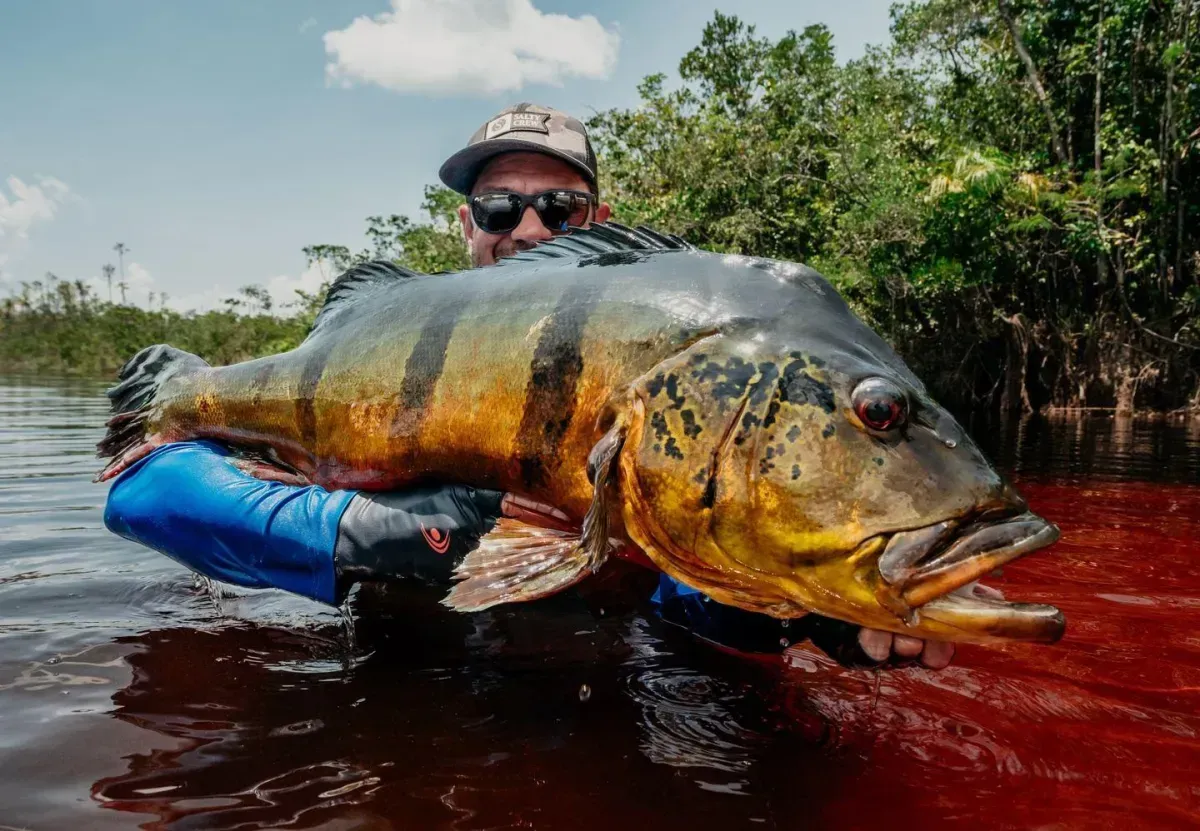Peacock Bass Fishing in the
Amazon Rainforest

Explore South America's most thrilling freshwater fishery
Peacock bass are the most exciting gamefish in the Amazon—and among the most aggressive in the world. Found in the Rio Negro basin and its countless tributaries, these powerful cichlids are known for their explosive strikes, stunning colors, and relentless fights.
The largest of the species, the Temensis, dominates these Rio Negro waters, and two smaller species of Peacock Bass, the Orinocensis and Monoculus, add to the fun and variety of the Peacock Bass fishing.
Together, these three species dominate the region’s blackwater lagoons, hidden creeks, and flooded forests, creating a fishery unlike any other on Earth. Whether you're an experienced angler or new to jungle fishing, there’s no better place to chase action-packed days on the water than the Amazon.
Our Peacock Bass
Adventures at a Glance
Floating Bungalows
Mobility Meets Maximum Access
These fly-in, mobile floating cabins are designed to move with water levels, placing anglers directly in the most productive headwaters and hidden creeks in the Rio Negro tributaries. With just eight anglers per week, you’ll fish in secluded zones few others reach—catching both quantity and quality peacock bass in unpressured waters. Each bungalow features A/C, a private bathroom, and cozy beds for an immersive but comfortable jungle experience.
Floating Bungalows
This trip provides a great chance at large peacock bass in an intimate jungle setting. These floating bungalows can take you to the most inaccessible headwaters regions.
Blackwater Adventurer
Remote Waters, Refined Experience
Blackwater EXPLORER
Remote Waters, Refined Experience
The most consistent fishing trip in the Amazon! This beautiful yacht roams the enormous Rio Negro basin from mid-October through February, concentrating on accessing productive waters.
With hundreds of miles of complex, island-dotted archipelagos and dozens of fish-laden tributaries, this is the world's largest peacock bass fishery – and the Explorer is built to take advantage of it.
Curicuriari
Trophy Class Peacock Bass
This remote location on the Curicuriari River is a lightly fished tributary with a growing reputation for producing some of the biggest peacock bass in the Amazon. If you’re aiming for a peacock bass world record or a shot at your personal best, this is the place. Anglers often encounter Cichla temensis over 20 pounds in these secluded waters. You’ll stay in a boutique setting with air-conditioned suites, excellent food, and a serious focus on trophy fish.
Despite their name, peacock bass aren’t bass at all—they’re part of the cichlid family, known for their strength, speed, and territorial aggression. They display an astonishing range of color and pattern variations, from deep vertical bars to vibrant red fins and glowing gold flanks. And while their beauty is remarkable, it’s their behavior that truly sets them apart. These fish will smash topwater lures without hesitation, erupt from the water in wild leaps, and challenge even the best anglers to land them. It’s no exaggeration to say that every cast in these waters can lead to a memorable fight.
Acute Angling’s trips are strategically timed to fish the Rio Negro basin and the Curicuriari River during low-water conditions—when peacock bass are most concentrated and active. This seasonal pattern is the key to success. When the water drops and baitfish leave the flooded forest, peacock bass follow them into fishable lagoons and channels. That’s when we move in. Our deep knowledge of Amazon water cycles, along with mobile fishing platforms, lets us stay on productive waters while others are left behind. Whether you're after sheer numbers, solid quality, or the possibility of connecting with a fish of a lifetime, Acute Angling puts you in the best position to succeed.
These are dedicated peacock bass fishing trips, focused on high-action. We provide the conventional tackle, the guides, the logistics, and the accommodations—all you have to do is show up ready to fish. Whether you’re drawn to the fast-paced action of dozens of hard-fighting fish per day, or you’re hoping to land a record peacock bass, Acute Angling has the Amazon experience that fits your goals. With our long track record of excellence, high return-angler rate, and deep regional expertise, we offer the most complete way to fish peacock bass in South America.
TESTIMONIALS
What others are saying
"There is not a better outfit to go peacock bass fishing with than Acute Angling. They are first class all the way. From start to finish they take great care of you and leave nothing to chance…My expectations for this trip were high and they exceeded that. I guess the best compliment I can give them is I’ve already booked two future trips with them."
- Ashley P.

"The guides and all of the Acute Angling staff are the best. Peacock Bass are in a league of their own! If this is on your check-list, JUST DO IT, you will not be disappointed!"
- T.

“This was one of the best trips I’ve ever been on!...The management made the whole process very easy and provided a ton of info for us leading up to the trip. I honestly can’t rave enough about it. My dad already has another trip booked with them and I will definitely be booking with them in the future on one of their other trips as well. 10/10 experience.”
- Bannon G.

Join Us: Get monthly newsletters, discount offers and new content notifications exclusively for our members. Join for FREE below with your name and email.
Join Us: Get monthly newsletters, discount offers and new content notifications exclusively for our members. Join for FREE below with your name and email.
Read Our Newest Blogs
Lorem ipsum dolor sit amet, consectetur adipiscing elit. Aliquam

Can I Catch Peacock Bass In Florida? Florida vs. Amazon Peacock Bass
This is the most common question I get asked at trade shows. My answer? Yes and no.

While the peacock bass in Florida and the peacock bass found in the Amazon are both part of the Cichlid family, they are very different sportfish.
The species of peacock bass in Florida is the Cichla, Ocellaris (1). In the United States, it is often referred to as the Butterfly Peacock. However, it is not the same species nor grows anywhere near the size of the Cichla, Temensis species found in the Amazon Basin.
In Ken Schultz’s book Essentials of Fishing, he gives a brief history on how the Ocellaris got to Florida:
The butterfly peacock, which does not attain the gargantuan size of some of its brethren, was introduced in Hawaii from British Guyana in 1957, and in Florida in 1984 and 1986 by fish from Brazil, Guyana, and Peru: it has also been stocked in Puerto Rico, Panama, Guam, and the Dominican Republic. (2)
According to the Florida Fish and Wildlife Conservation Commission the Florida state record is 9.11 pounds. (3) The IGFA all tackle World Record for the largest species of peacock bass the Cichla, Temensis is 13.19 kg (29 lb 1 oz) (4).
Largemouth bass and bluegill are all in the sunfish family (5), but I don’t believe anglers would say that fishing for largemouth bass is the same experience as fishing for bluegill. In a similar fashion fishing for the Ocellaris is fun, but it can’t be compared to the larger, stronger, and predatory aggression of the Cichlid, Temensis.
If you need additional proof, call me, book a trip, and find out for yourself. 😊
1. U.S. Fish & Wildlife Service. Ecological Risk Screening Summary-Butterfly Peacock Bass. Web version 6/14/2018.
2. Schultz’s, Ken. Essentials of Fishing. (See page 15)
3. Florida Fish and Wildlife Conservation Commission. https://myfwc.com/wildlifehabitats/profiles/freshwater/butterfly-peacock/
4. IGFA.org https://myfwc.com/wildlifehabitats/profiles/freshwater/butterfly-peacock/
5. Pennsylvania Fish and Boat Commission. Sunfish Family Tree

(866) 832-2987
